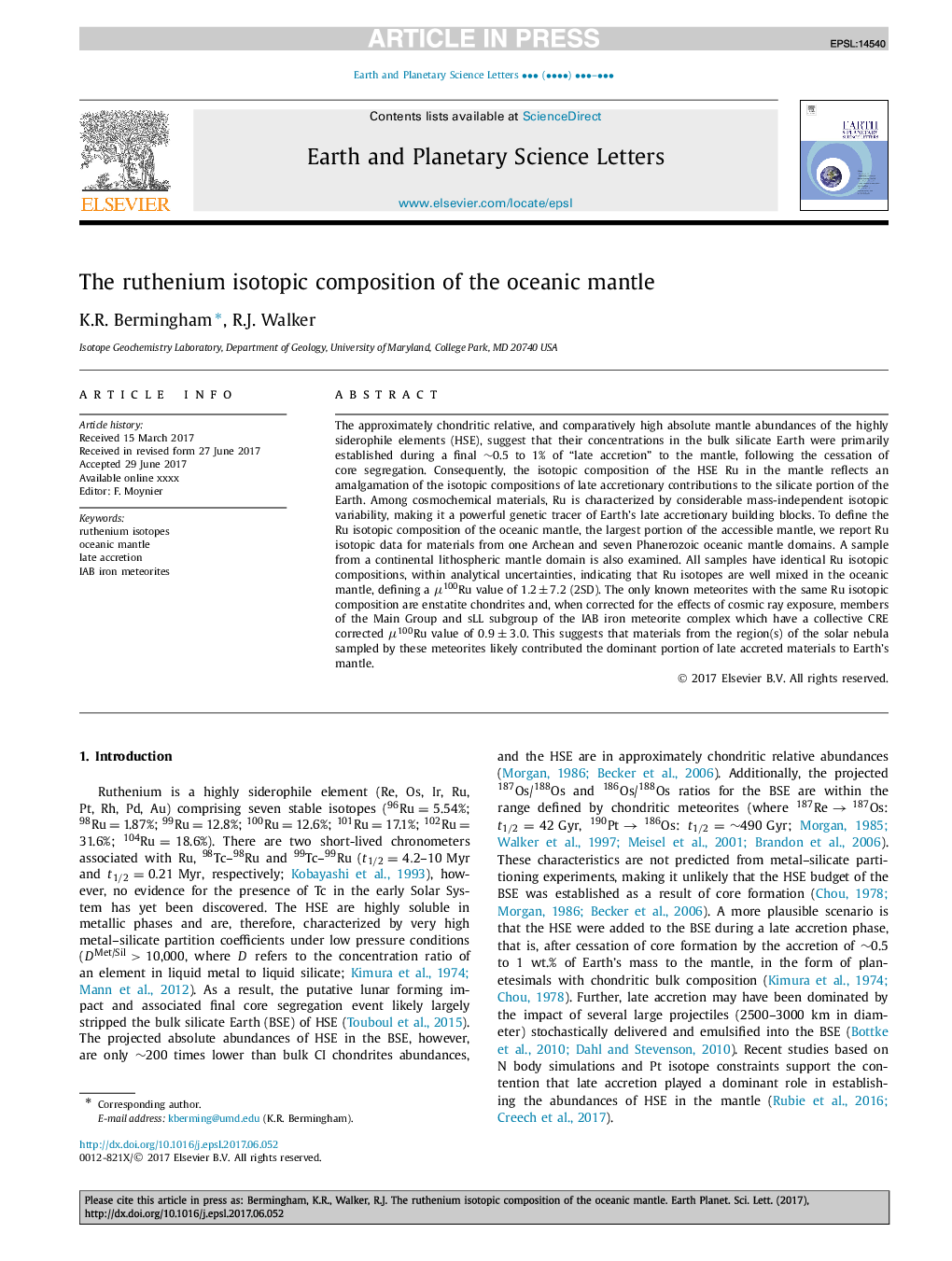| Article ID | Journal | Published Year | Pages | File Type |
|---|---|---|---|---|
| 5779756 | Earth and Planetary Science Letters | 2017 | 8 Pages |
Abstract
The approximately chondritic relative, and comparatively high absolute mantle abundances of the highly siderophile elements (HSE), suggest that their concentrations in the bulk silicate Earth were primarily established during a final â¼0.5 to 1% of “late accretion” to the mantle, following the cessation of core segregation. Consequently, the isotopic composition of the HSE Ru in the mantle reflects an amalgamation of the isotopic compositions of late accretionary contributions to the silicate portion of the Earth. Among cosmochemical materials, Ru is characterized by considerable mass-independent isotopic variability, making it a powerful genetic tracer of Earth's late accretionary building blocks. To define the Ru isotopic composition of the oceanic mantle, the largest portion of the accessible mantle, we report Ru isotopic data for materials from one Archean and seven Phanerozoic oceanic mantle domains. A sample from a continental lithospheric mantle domain is also examined. All samples have identical Ru isotopic compositions, within analytical uncertainties, indicating that Ru isotopes are well mixed in the oceanic mantle, defining a μ100Ru value of 1.2±7.2 (2SD). The only known meteorites with the same Ru isotopic composition are enstatite chondrites and, when corrected for the effects of cosmic ray exposure, members of the Main Group and sLL subgroup of the IAB iron meteorite complex which have a collective CRE corrected μ100Ru value of 0.9±3.0. This suggests that materials from the region(s) of the solar nebula sampled by these meteorites likely contributed the dominant portion of late accreted materials to Earth's mantle.
Related Topics
Physical Sciences and Engineering
Earth and Planetary Sciences
Earth and Planetary Sciences (General)
Authors
K.R. Bermingham, R.J. Walker,
